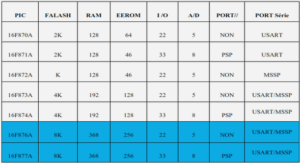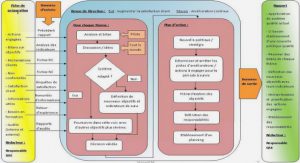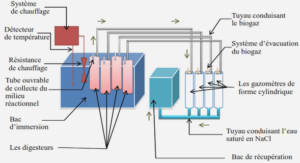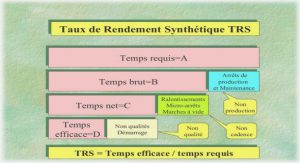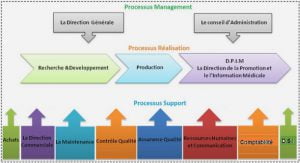PROPOSED MODEL OF BOLT SPACING
Bolted flange joint
Bolted flange joint’ refers to the entire structure, including the pipe, the hub, the flange ring, the gasket and the bolts which connect two pressure components together. During assembly of the structure, two flanges are tightened using bolts, and the gasket located between the flanges provides tightness when the system is under internal pressure. The bolt load holds the flanges together, against the force developed by the internal pressure, which tends to separate them. The normal compressive force works to prevent leakage of the contained pressurized fluid, but is not so great as to crush the surface of the gasket. To help users who demand reliability and improved gasket performance, the gasket must be put through a variety of tests to evaluate its behavior. Some descriptive details should probably be provided on different types of bolted flange joints. Depending on the available methods used to design bolted flange joints, flanges can be classified under several categories. The technical specifications placed on bolted flange joints are a function of operational conditions, which determine their design. Essentially, there are three different designs available: raised face type, full face type and metal-to-metal contact type.
Gasket contact stress
Because of the flexibility of the axial flange movement, the gasket contact stress is not equal throughout the gasket contact area. The gasket contact stress at the bolt position has the highest values whereas the lowest values occur between two bolts. The distribution of the gasket contact stress is non-linear in the circumferential direction, while in the gasket radial direction, stress distribution is linear.
The interaction of the flange and gasket must be controlled for a reliable performance in a bolted flange joint assembly. In general, the tightness of bolted flange joints depends on the contact stress between the flange surfaces and the gasket surfaces. The tension forces in bolts form the compression force between two flanges, resulting in the gasket contact stress, in order to prevent the escape of the confined fluid. The leakage between the gasket and the flanges is affected not only by the average contact stress, but is also significantly affected by the circumferential gasket contact stress distribution. The gasket is used to create a static seal between two flanges and to maintain that seal while in operation conditions which may vary for the internal pressure and loads. The smooth flange finishes during handling and assembly must be considered in specific application. The corrosion and erosion of the flange surfaces during operations have to be taken into account
Linear solution of flange
The approach adopted will be based on the expansion of the theory of a circular beam resting on an elastic foundation. This work will provide an analytical solution to the problem of bolt replacement and hot re-torque and provide for gasket and flange stress variation between bolts. The analytical solution should provide sufficient accuracy to permit the determination of gasket stress variation based on flange deflections. The local deformation of the flange is a parameter to consider as this may have a great influence on the gasket contact stress. This is a proposal of an analytical model to simulate the mechanical behavior of a bolted gasketed joint and to determine the contact stress distribution in circumferential directions.
Finite element model
Two bolted flange joints used in pairs were studied, one a 24-inch HE flange and the other a 52-inch HE flange. To validate the analytical model, two 3-dimensional FE models were built and run on ANSYS. Because of the symmetry with respect to the plane that passes through the gasket mid-thickness and the bolts as well as to the repeated bolt load, it is only necessary to model an angular portion bounded by two longitudinal planes located between bolts. Symmetry could have been used to halve the model again through the bolt center-line.
It should be noted that the analytical model developed can be used together with FEM to investigate the effect of bolt bending due to flange rotation. The initial bolt-up is applied by imposing an equivalent axial displacement on the bolt mid-plane nodes to produce the target initial bolt-up stress at 276 MPa. Because the axial displacement is very small, it does not alter the symmetry. A convergence criterion based on the final equivalent axial displacement was used to refine the mesh. An isoperimetric 8-node solid element SOLID185 type mesh was generated for the 3-D modeling of solid structures. It is defined using eight nodes each having three degrees of freedom: translations in the nodal x, y, and z directions. The element is defined by eight nodes and orthotropic material properties. The bolts are also modeled using these elements and coupled to the adjacent nodes on the upper surface of the flange. In fact, the meshing was refined until the change in the contact pressure dropped to less than 1%. Because of the symmetry, only half of the gasket thickness was modeled.
Finite element model
To validate the analytical model, two 3-dimensional numerical FEM models of the two bolted joints, namely, 52 in and 120, in the HE flange, were built and run on the ANSYS finite element software. Because of the symmetry with the plane passing through the gasket mid-thickness and the bolts as well as the repeated loads equally spaced around the circumference, it is only possible to model an angular portion that passes through two longitudinal planes located at two adjacent bolts. A uniform simultaneous load is applied to all bolts by imposing an equivalent axial displacement to the bolt mid-plane nodes to produce the target initial bolt-up stress. Based on the analytical solution described above, flange displacements and gasket contact stresses were calculated at the position of gasket reaction diameter G. The initial bolt-up load was 276 MPa. The Young’s modulus of the flange and bolts were assumed to be 207 GPa. The experimental data for the corrugated metal sheet (CMS) gasket was applied both for the analytical solutions and the FEM. A mesh of isoperimetric of SOLID185 type 8-node solid elements was generated for the 3-D modeling of solid structures. The bolts were also modeled using these elements, and coupled to the adjacent nodes on the upper surface of the flange. Because of the symmetry, only half of the gasket thickness is modeled.
|
Table des matières
INTRODUCTION
CHAPTER 1 GENERAL INFORMATION AND THESIS ORGANIZATION
1.1 Introduction
1.2 Bolted flange joint
1.2.1 Raised face type
1.2.2 Full face type
1.2.3 Metal-to-metal contact type
1.3 Definition of problem
1.3.1 Loads in bolted flange joint
1.3.2 Gasket contact stress
1.4 Thesis organization
CHAPTER 2 LITERATURE REVIEW AND OBJECTIVES
2.1 Introduction
2.2 Analytical approaches
2.3 Experimental approach
2.4 Finite element analysis
2.5 Approaches at ÉTS
2.6 Existing model of bolt spacing
2.6.1 Winkler hypothesis
2.6.2 Volterra’s model
2.6.3 Roberts’s model
2.6.4 Koves’ model
2.6.5 The TEMA standard
2.7 Objectives of the study
CHAPTER 3 PROPOSED MODEL OF BOLT SPACING
3.1 Introduction
3.2 Proposed model of bolt spacing
3.2.1 Proposed analytical model
3.2.2 Linear foundation behavior
3.2.2.1 Linear solution of flange
3.2.2.2 Eigenvalues and eigenvectors method to solve the problem
3.2.2.3 Finite element model
3.2.3 Non-linear foundation behavior
3.2.3.1 Non-linear solution of flange
3.2.3.2 Runge-Kutta method to solve the problem
3.2.3.3 Finite element model .
3.2.4 Linear regression model of bolt spacing
CHAPTER 4 PAPER 1: EFFECT OF BOLT SPACING ON THE CIRCUMFERENTIAL DISTRIBUTION OF GASKET CONTACT STRESS IN BOLTED FLANGE JOINTS
4.1 Introduction
4.2 Theoretical analysis
4.2.1 Analytical model
4.2.2 Flange working examples
4.3 Finite element model
4.4 Discussion
4.5 Conclusion
APPENDIX
REFERENCES
CHAPTER 5 PAPER 2: ON THE USE OF THEORY OF RINGS ON NON-LINEAR ELASTIC FOUNDATION TO STUDY THE EFFECT OF BOLT SPACING IN BOLTED FLANGE JOINTS
5.1 Introduction
5.2 Analytical model
5.3 Flange working examples
5.4 Finite element model
5.5 Results and discussion
5.6 Conclusion
APPENDIX
REFERENCES
CHAPTER 6 PAPER 3: A SIMPLIFIED METHOD FOR ESTIMATING BOLT SPACING IN BOLTED FLANGE JOINTS
6.1 Introduction
6.2 Analytical model
6.3 Flange working examples
6.4 Results and discussion
6.5 Conclusion
APPENDIX
REFERENCES
CONCLUSION
![]() Télécharger le rapport complet
Télécharger le rapport complet


